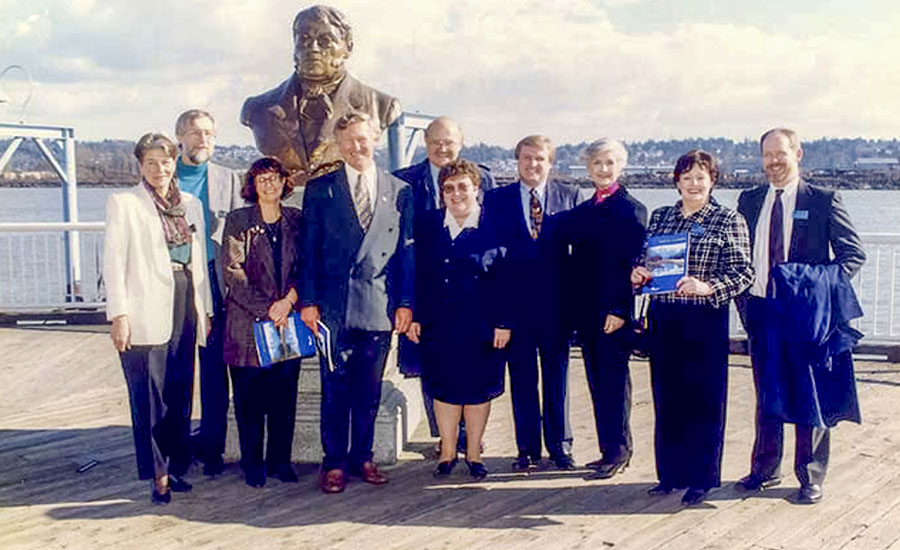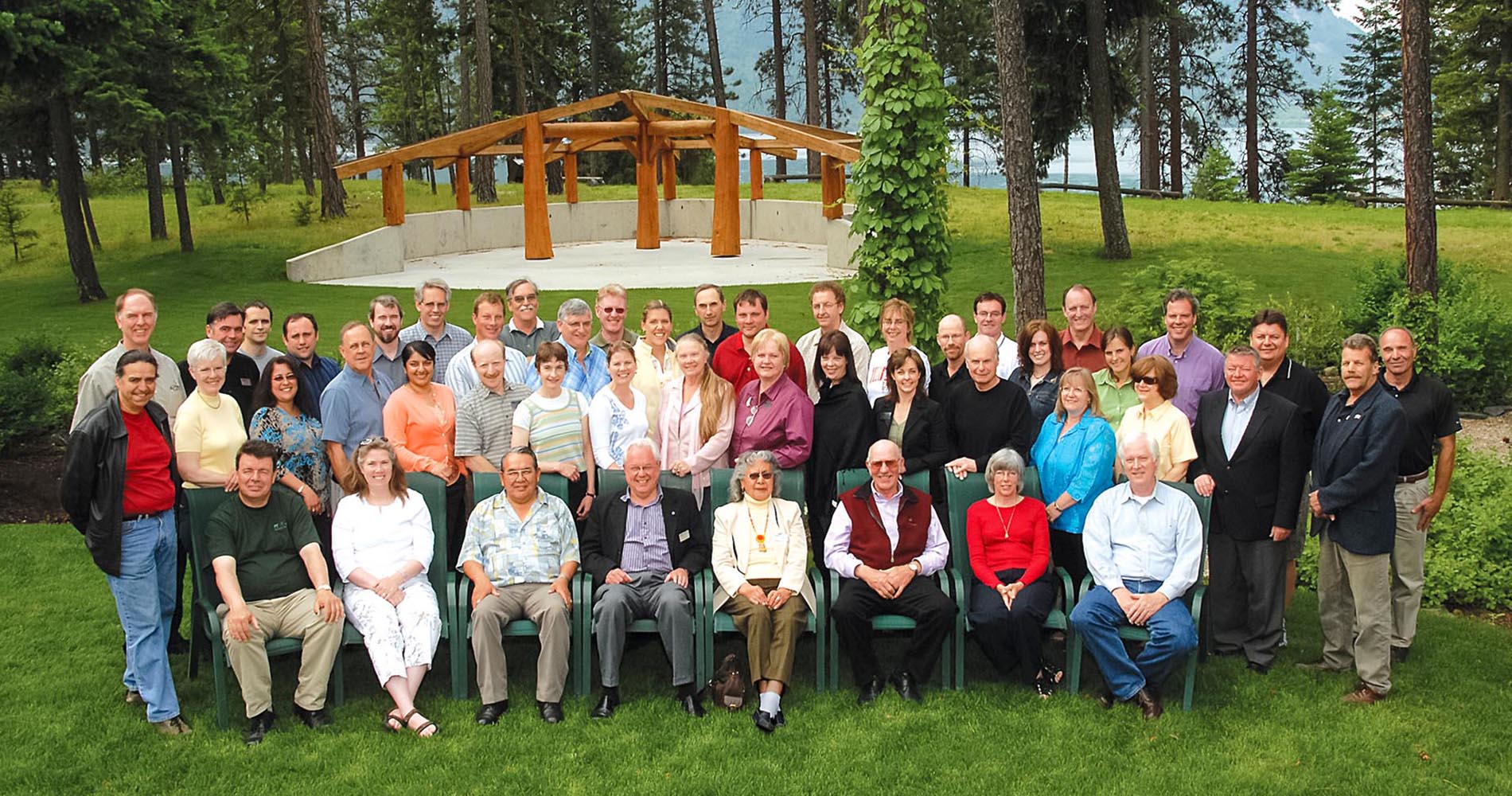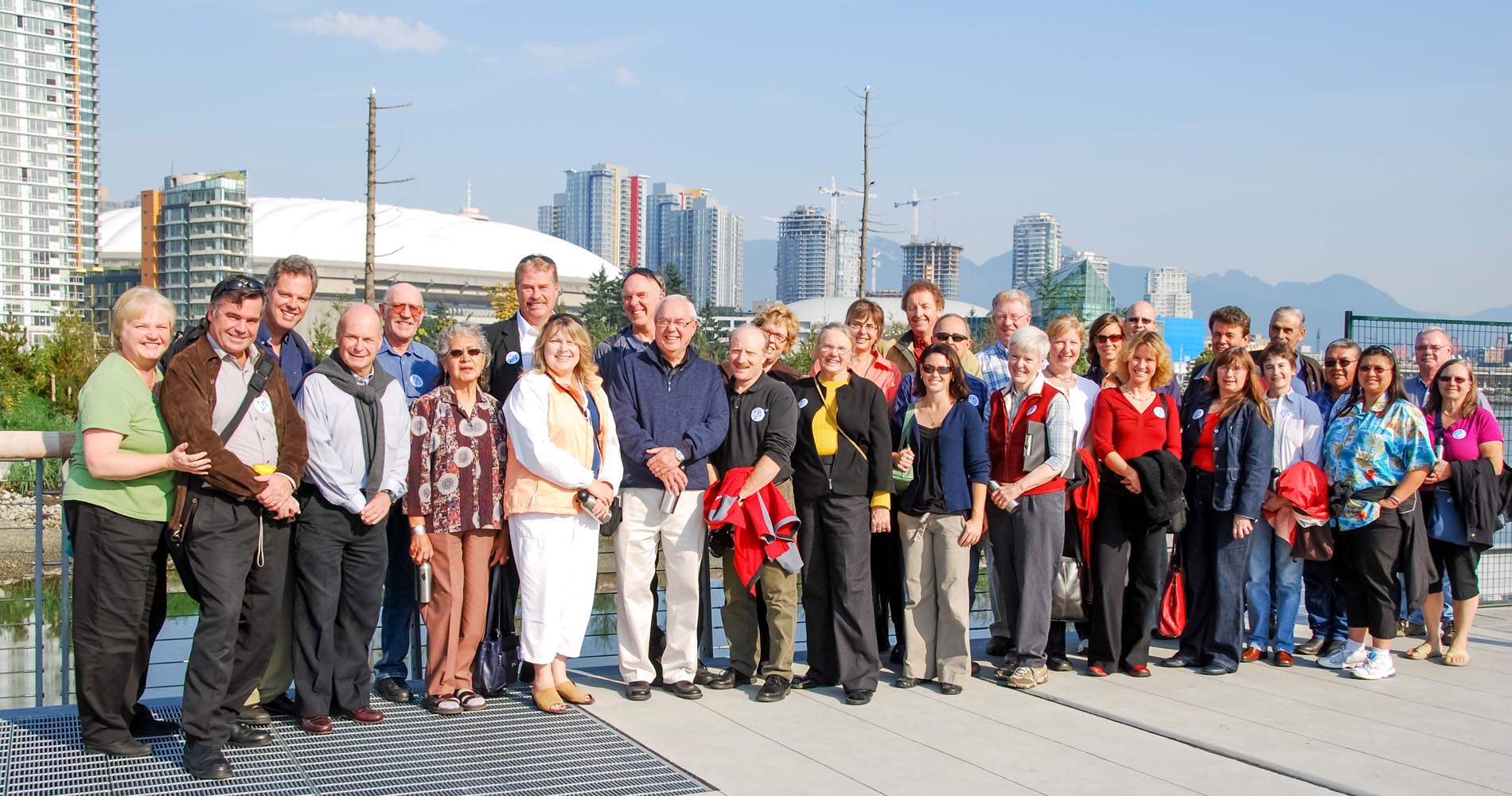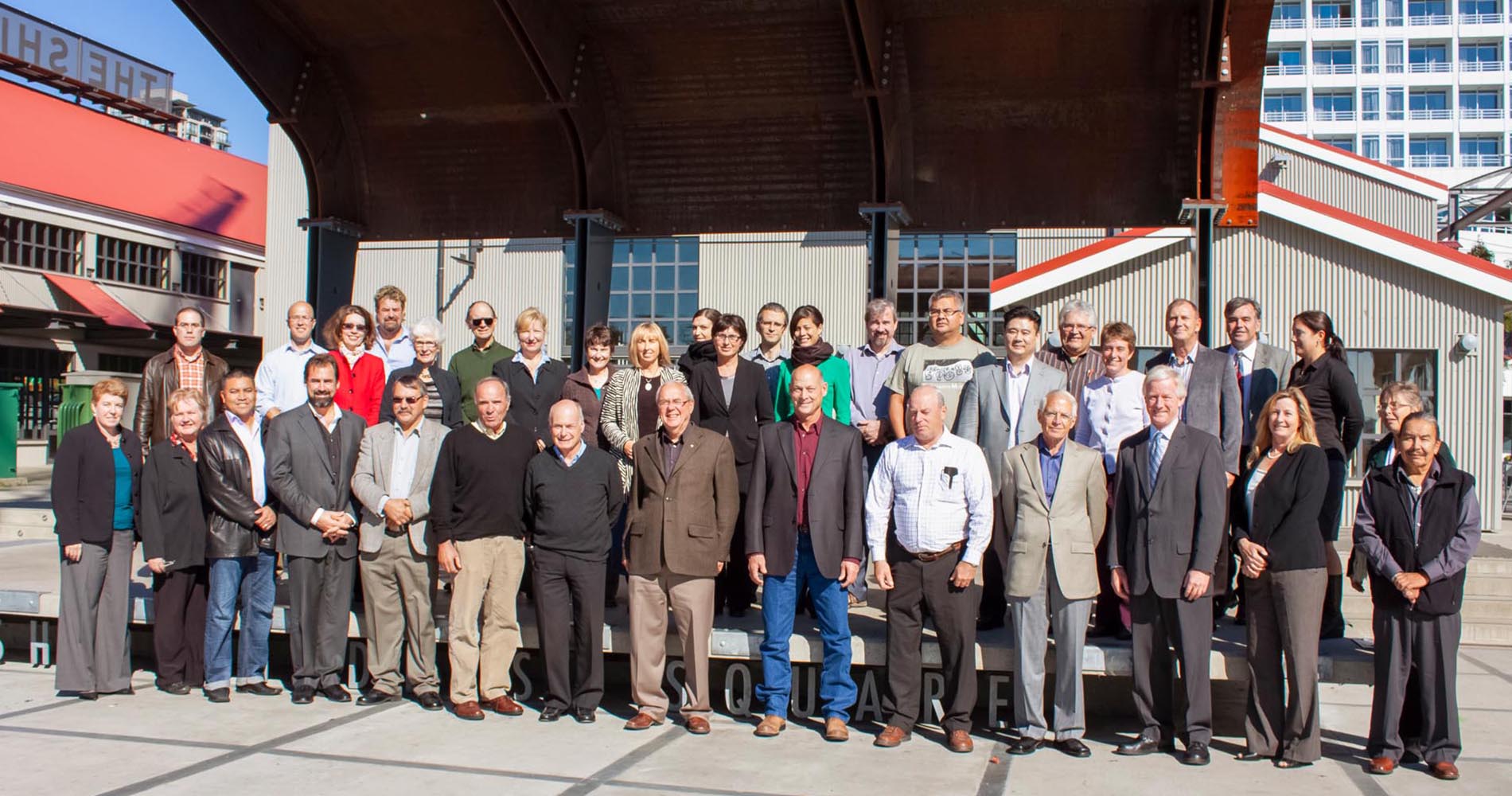Our History
The Fraser Basin Council works in communities throughout British Columbia. Our name and story began in the Fraser River Basin, the land drained by the Fraser River and its tributaries − and home to two-thirds of BC residents.
The Fraser – A River Runs Through Us

The Fraser River is at the heart of British Columbia. This is the longest river within BC — stretching some 1,375 km from the Rockies to the Salish Sea — and one of the world’s great wild salmon rivers. The Fraser River Basin is BC’s largest, and Canada’s fifth largest, drainage system — 240,000 square km (roughly a quarter of the province). For a sense of the scale, consider that all of Great Britain could easily fit within it.
First Nations were the first to recognize the special nature of this waterway and enjoy its bounty. Indigenous people have lived beside the river since the vast glaciers started receding 10,000 years ago and the Fraser River, as we know it, emerged.
The River Needs Help
Following British and European settlement, the Fraser River and the Basin were impacted by over a century of intensive population growth and development. By the 1980s, alarm bells were ringing over the fast pace of industrial and agricultural activity, urbanization and pollution from various sources. The health of the river was in jeopardy. Although the situation seemed bleak, environmental management agencies believed the river could recover if steps were taken.

Fraser River aerial taken along the river’s lower reaches. Photo: A Jansen
One “watershed moment” came when Gordon Campbell, then Mayor of Vancouver, and John Backhouse, then Mayor of Prince George, challenged each other to “clean up their parts of the river.” The joint challenge reminded everyone of the efforts needed all along the Fraser River and across jurisdictional boundaries.
Early Work ― Fraser River Action Plan
In 1990 the Government of Canada identified the Fraser River Basin as a major freshwater system requiring priority action.
From Canada’s Green Plan came the Fraser River Action Plan (FRAP). Jointly sponsored by the federal Departments of the Environment and Fisheries and Oceans, FRAP was modelled on the Fraser River Estuary Management Program, which was helping create inter-agency cooperation on estuary management.
FRAP made a start on addressing the environmental health of the Fraser River and the Basin. The program encouraged collective stewardship and cooperative partnerships, and helped people understand how their actions could improve (or harm) watershed health. FRAP protected wild bird habitat, curtailed the release of toxic wood preservatives, and helped introduce some best management practices and pollution prevention plans for business and industry.
FBC’s Predecessor — Fraser Basin Management Board
The Fraser Basin Management Board was created in 1992 to address some river management issues identified in the Fraser River Action Plan. The FBMB was composed of people from within the four orders of Canadian government (federal, provincial, municipal and First Nations), along with those from the private sector and civil society.
Over the course of its five-year mandate (1992-1997), the FBMB demonstrated the value of leaders working together in collaboration on complex issues by:
The FBMB launched eight demonstration projects in watersheds, engaging multiple interests in each region:
The FBMB introduced State of the Basin Reports and Report Cards, which letter graded progress towards sustainability in the Fraser Basin. These laid the groundwork for FBC’s later sustainability indicators program. With the vision of “Sustainability Together,” the FBMB also created a BasinPlan that set out four directions for action that would later be reflected in a Charter for Sustainability.
A Charter for Sustainability
A key legacy of the Fraser Basin Management Board was a strategic plan for the social, economic and environmental health of the Basin. The Charter for Sustainability was signed in 1997 by 17 leaders and citizens, and it served as a core guidance document for the new Fraser Basin Council.
The Charter also crystallized a vision of the Fraser Basin as a place where “social well-being is supported by a vibrant economy and sustained by a healthy environment.” Today FBC continues to support this vision for all of British Columbia.

The Charter speaks to the importance of people in all walks of life understanding sustainability, caring for ecosystems, strengthening their communities and improving decision-making at all levels. There is also recognition, under Principle 11, that Aboriginal rights and titles now being defined should be reconciled in a fair and just manner.
Creation of the Fraser Basin Council

FBC’s first Chair Iona Campagnolo with Vice-Chair Roy Mussell
As the FBMB wrapped up its five-year program, support emerged for a successor organization based on the same collaborative model.
Under the leadership of Chair Iona Campagnolo and the first Board of Directors, and with support from Executive Director David Marshall, the Fraser Basin Council was formed in 1997 as a non-profit society The Council attained charitable status in 1998.























